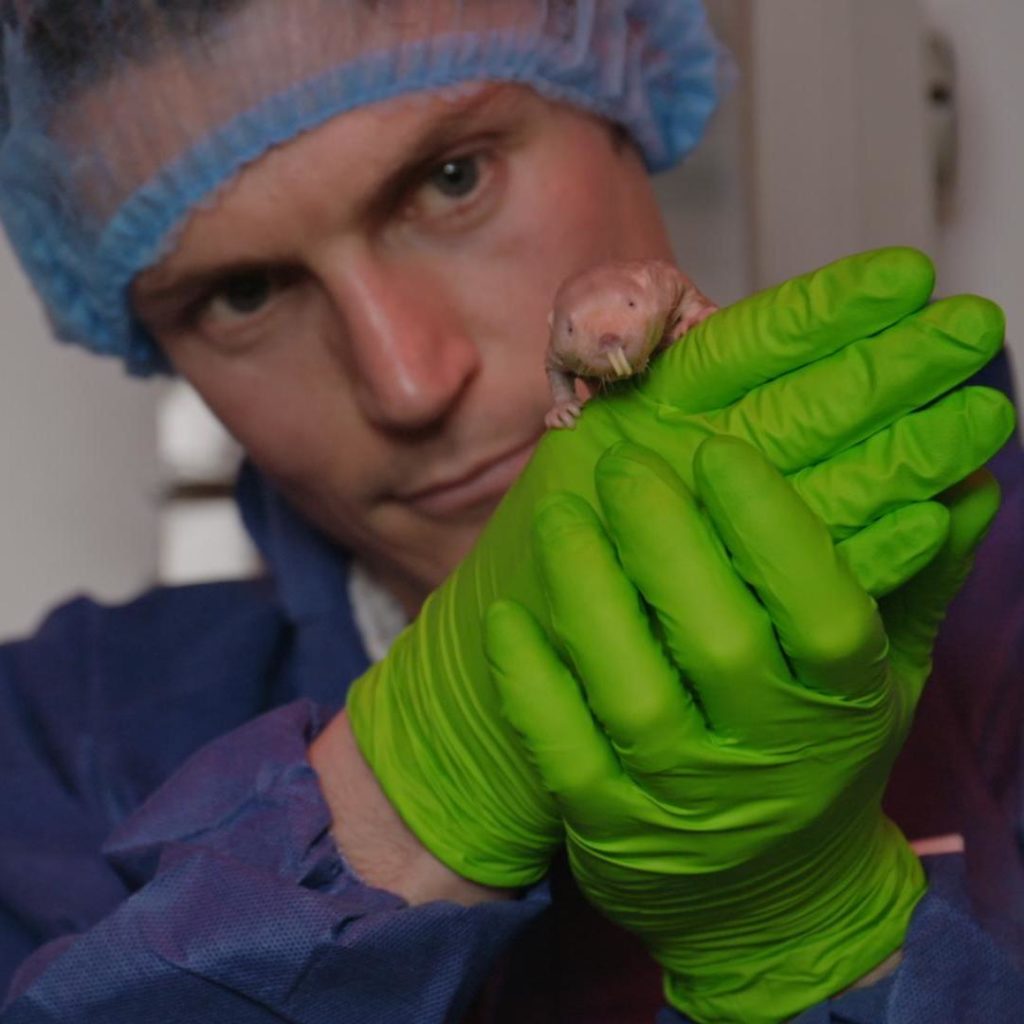Published April 2022

Summary
To understand how brains age, researchers often study short-lived rats and mice. Another rodent, the naked mole rat, lives for decades and ages healthily. Professor Ewan St. John Smith and his team are examining this unusual animal to see whether its unique ageing biology can unlock new ways to treat and cure neurodegenerative diseases.
Working with naked mole rats is amazing because everything you discover could potentially go on to help people.
Prof. Ewan St. John Smith
As humans age, things go wrong. When our brains age, this often results in neurodegenerative diseases like Alzheimer’s and Parkinson’s diseases. By understanding how and why age makes such a big difference to the health of our brains, scientists hope we can better treat and possibly even prevent these conditions. But what is the best way to study an ageing brain?
Typically, biomedical researchers study mice and rats, which only live for around two years. This makes them less ideal for ageing research. That’s why we’ve chosen to study another, more unusual rodent: the naked mole-rat.
Naked mole rats have special biology. Despite their small size – being just a little larger than a mouse – they live for a very long time. The oldest naked mole-rat is currently 39 years old and still going strong. However, unlike humans, these animals remain healthy as they age and don’t appear to suffer from neurodegenerative diseases. If we can understand why their brain cells age well, that might identify new treatment targets for neurodegenerative diseases that haven’t been looked at before.

Naked mole-rats are rewriting the rule books
I remember once being asked, “What would be a surprising finding?” It was a really tricky question to answer because when it comes to naked mole rats, they rarely do what you expect. Working with naked mole-rats is amazing because everything you discover could potentially go on to help people.
The naked mole-rat is an animal that ages healthily. If we can understand why their brain cells age well, that might identify new treatment targets for neurodegenerative diseases that haven’t been looked at before.
Dr Paulina Urriola-Muñoz – Post-doctoral researcher
As we age, our cells can get damaged by natural chemicals called ‘reactive oxygen species’. We were hoping to find out what techniques naked mole-rats use to prevent this damage from occurring. Instead, we found that naked mole-rats don’t appear to prevent cell damage and we are now working out how their cells deal with damage to maintain lifelong health. This was completely unexpected and has taken us down a whole new avenue of research.
Another way naked mole-rat biology is unique is how their cells respond to a lack of oxygen. We’re using this to learn more about strokes. During a stroke, when the blood supply is disrupted, cells in the brain start to die from a lack of oxygen. Surprisingly, naked mole-rats can live for 18 minutes without any oxygen at all and completely recover once oxygen is returned. If we can work out how brain cells in naked mole-rats can survive in low oxygen conditions without dying, that could offer up ways of preventing brain damage in the minutes after someone has a stroke.
Funding the fundamentals
Studying extreme organisms can transform our understanding and practice. For example, today one of the laboratory techniques best known by the community is PCR. The COVID-19 PCR tests rely on an enzyme extracted from Thermus aquaticus, a species of bacteria adapted to life in the hostile environment of thermal vents in Yellowstone Park.
By studying the extremes of life, you’re more likely to make bigger leaps forward.
Ewan St. John Smith
Working with unusual animals like the naked mole-rat is certainly a challenge. There are lots of tools available for the study of mice or rats, but the same tools aren’t available for naked mole-rats. While that can make this research more risky, by studying the extremes of life, you’re more likely to make bigger leaps forward. We’re so pleased that the Dunhill Medical Trust is backing this project despite being different from the usual human ageing research.
Next, we’re working on identifying genes that might be helping naked mole-rats to age healthily. We’re also aiming to make it easier for more researchers to study them by creating cell lines from naked mole-rat cells, which we can share with the research community so that more people can uncover the magic of this species.
Find out more
Watch these videos to find out more about the naked mole-rat’s unique biology.

